When it comes to maintaining a healthy diet, being mindful of the calorie content in our meals is crucial. Making informed choices about what we eat can have a significant impact on our overall health and well-being. One popular option for a nutritious meal on the go is Salad and Go, a fast-food chain that offers a variety of salads with different calorie contents.
- Salad and Go offers a range of low-calorie salad options for those looking to make healthier choices.
- Popular salad choices at Salad and Go include Caesar salad, pasta salad, chef salad, Greek salad, and Cobb salad.
- Mayo-based salads like tuna salad, egg salad, chicken salad, macaroni salad, and potato salad tend to be higher in calories and fat.
- Commercially available salads from popular chains such as Wendy’s, Olive Garden, Subway, and Panera Bread have varying calorie contents.
- Dressings and toppings can significantly increase the calorie content of salads, so it’s important to choose low-calorie options.
Understanding Salad and Go’s Menu Options
Salad and Go offers a wide range of salad options, each with its own unique nutritional profile. Whether you’re craving a classic Caesar salad, a refreshing Greek salad, or a hearty Cobb salad, Salad and Go has you covered. Their menu is designed to provide delicious and nutritious choices to suit every palate and dietary preference.
When it comes to nutritional information, Salad and Go makes it easy for customers to make informed choices. Each salad item on their menu comes with detailed nutritional information, including the calorie count, fat content, protein content, and more. This transparency allows you to tailor your meal to your specific dietary needs and goals.
For those who prefer a little more variety in their salads, Salad and Go also offers the option to build your own salad. You can choose from a wide selection of fresh ingredients, including crisp vegetables, protein options like grilled chicken and tofu, and a variety of tasty dressings. By customizing your salad, you have full control over the nutritional content and can create a meal that perfectly suits your tastes and nutritional goals.
Eating healthy has never been easier!
| Salad Option | Calories | Fat (g) | Protein (g) |
|---|---|---|---|
| Caesar Salad | 250 | 18 | 12 |
| Greek Salad | 180 | 14 | 6 |
| Cobb Salad | 350 | 28 | 18 |
As you can see from the table above, Salad and Go’s salads offer a range of calorie counts to suit different dietary needs. Whether you’re looking for a lighter option or a more substantial meal, there’s a salad on the menu that fits the bill. So next time you’re in the mood for a healthy and delicious meal, give Salad and Go a try!
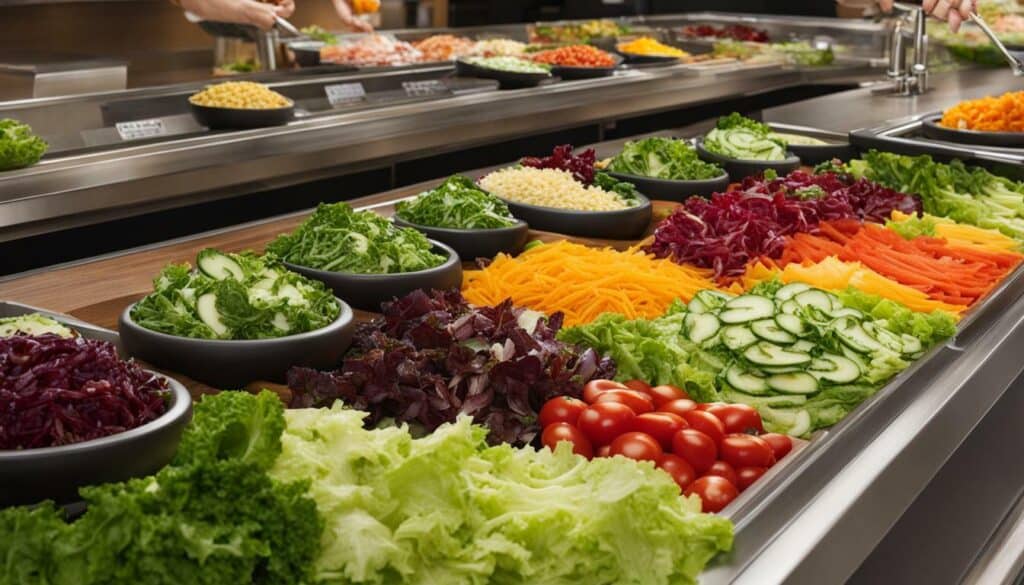 Source: Salad and Go Menu
Source: Salad and Go Menu
Note: Nutritional information may vary depending on the specific ingredients and customization options chosen.
Popular Salad Choices and Their Calorie Contents
Let’s take a closer look at the calorie contents of some popular salad choices offered by Salad and Go. Salads are often seen as a healthy option, but the calorie content can vary depending on the ingredients used. By understanding the calorie counts of these popular salads, we can make informed choices that align with our health and wellness goals.
One popular choice is the Caesar salad. This classic salad typically includes crisp romaine lettuce, Parmesan cheese, croutons, and Caesar dressing. While it may seem like a lighter option, the calorie content can add up, especially when topped with additional ingredients like grilled chicken or shrimp. It’s important to be mindful of portion sizes and consider lighter dressing alternatives to keep the calorie count in check.
Another delicious option is the Greek salad. This refreshing salad usually consists of crisp lettuce, tomatoes, cucumbers, olives, feta cheese, and a tangy Greek dressing. The calorie content of the Greek salad can vary depending on the portion sizes and the amount of dressing used. Opting for a lighter dressing or asking for it on the side can help reduce the overall calorie count.
The Cobb salad is a popular choice for those looking for a more substantial and satisfying meal. This salad typically includes mixed greens, grilled chicken, avocado, bacon, hard-boiled eggs, tomatoes, and blue cheese crumbles. While it offers a variety of flavors and textures, it’s important to be aware of the higher calorie content due to the ingredients like bacon and blue cheese. Moderation is key when enjoying this delicious salad.
| Salad | Calorie Content (approx.) |
|---|---|
| Caesar Salad | 350-600 calories |
| Greek Salad | 300-500 calories |
| Cobb Salad | 500-800 calories |
Remember, while salads can be a nutritious choice, the calorie content can vary depending on the ingredients used and the portion sizes. Being mindful of the calorie content and making informed choices can help us enjoy these delicious salads without compromising our health and wellness goals.
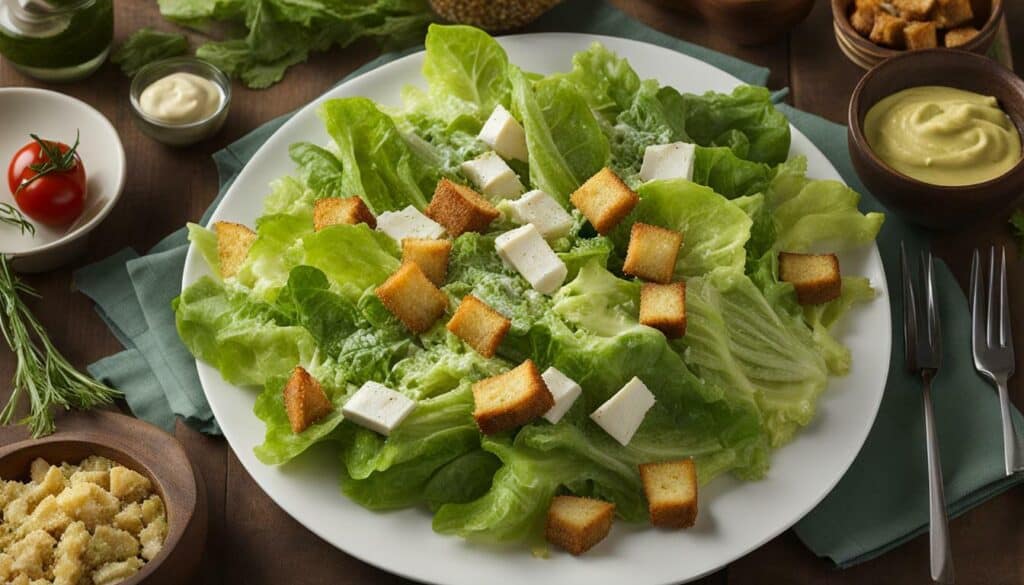
Choosing salads with fresh ingredients and lighter dressings can help keep the calorie count in check.
Mayo-Based Salads and their Calorie Content
While mayo-based salads can be delicious, they often come with higher calorie and fat content. Salads like tuna salad, egg salad, chicken salad, macaroni salad, and potato salad, which are commonly prepared with mayonnaise, tend to have a higher calorie count. This is because mayonnaise is rich in fats and calories, which can contribute to weight gain if consumed in large quantities.
It’s important to note that not all mayo-based salads are unhealthy. They can still be enjoyed as part of a balanced diet when consumed in moderation. However, if you’re watching your calorie intake or trying to make healthier choices, there are alternatives you can consider.
One option is to substitute mayonnaise with healthier alternatives such as Greek yogurt or avocado. These alternatives provide similar creaminess and flavor but with fewer calories and healthier fats. Experimenting with different ingredients and dressings can help you create salads that are both flavorful and nutritious.
To give you a clear idea of the calorie content of mayo-based salads, here’s a table comparing the approximate calorie counts of some popular mayo-based salads:
| Salad | Calories per Serving (1 cup) |
|---|---|
| Tuna Salad | 350 |
| Egg Salad | 310 |
| Chicken Salad | 390 |
| Macaroni Salad | 320 |
| Potato Salad | 260 |
Remember, these calorie counts may vary depending on the specific recipe and portion size. If you’re concerned about the exact calorie content of a mayo-based salad, it’s always best to check the nutritional information provided or use a calorie tracking app to get a more accurate estimate.
Commercially Available Salads and Calorie Variations
If you’re dining out and looking for a healthy salad option, it’s important to be aware of the calorie content in commercially available salads. Popular chains like Wendy’s, Olive Garden, Subway, and Panera Bread offer a variety of salads, but the calorie counts can vary significantly. Let’s take a closer look at the calorie variations in these salads.
At Wendy’s, you’ll find salads such as the Apple Pecan Chicken Salad and the Taco Salad. While the Apple Pecan Chicken Salad is a lighter choice with around 320 calories, the Taco Salad can pack around 650 calories due to the added ingredients like tortilla chips and chili.
Olive Garden’s salad offerings include the Grilled Chicken Caesar Salad and the Caprese Salad. The Grilled Chicken Caesar Salad comes in at approximately 520 calories, while the Caprese Salad is a lighter option with around 250 calories.
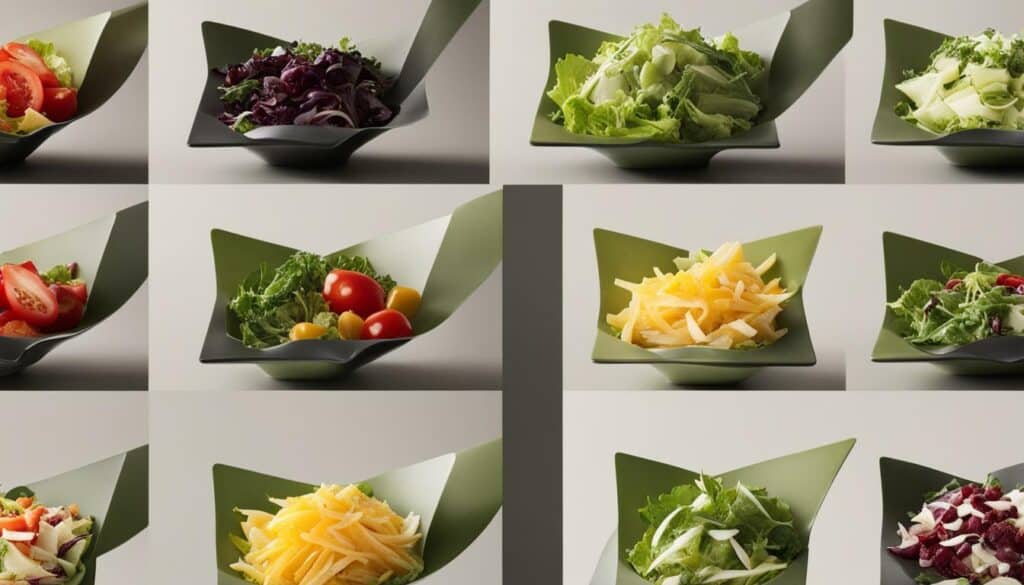
Subway is known for its fresh ingredients and customizable salads. The Veggie Delite Salad contains 50 calories, making it an excellent choice for those seeking a lighter option. However, if you add high-calorie dressings or meats, the calorie count can increase significantly.
Panera Bread offers a wide range of salads, including the BBQ Chicken Salad and the Greek Salad. The BBQ Chicken Salad has around 430 calories, while the Greek Salad comes in at approximately 330 calories. The calorie content can change depending on the choice of dressing, so it’s essential to choose wisely.
Salad Comparison Table
| Restaurant | Salad Name | Calories |
|---|---|---|
| Wendy’s | Apple Pecan Chicken Salad | 320 |
| Wendy’s | Taco Salad | 650 |
| Olive Garden | Grilled Chicken Caesar Salad | 520 |
| Olive Garden | Caprese Salad | 250 |
| Subway | Veggie Delite Salad | 50 |
| Panera Bread | BBQ Chicken Salad | 430 |
| Panera Bread | Greek Salad | 330 |
When making your salad choice, keep in mind that the calorie content can be affected by the dressing and additional toppings you choose. Opt for lighter dressings, such as vinaigrettes or olive oil-based options, and limit high-calorie toppings like cheese, croutons, and bacon. Remember, a well-balanced salad with a variety of colorful vegetables and lean protein can provide a nutritious and satisfying meal.
The Impact of Dressings and Toppings on Salad Calories
It’s not just the ingredients in the salad that contribute to its calorie count; dressings and toppings can make a significant difference as well. While salads are generally known for being healthy and low in calories, the addition of high-calorie dressings and toppings can quickly turn a nutritious meal into a calorie bomb. Therefore, it’s essential to choose your dressings and toppings wisely to keep your salad light and nutritious.
When it comes to dressings, creamy options like ranch, blue cheese, and Caesar can be high in calories and fat. A single serving of creamy dressing can add anywhere between 100-200 calories to your salad. Opting for lighter alternatives like vinaigrettes or low-fat dressings can significantly reduce the calorie content without compromising flavor.
Similarly, toppings like croutons, bacon bits, cheese, and nuts can add extra calories and fat to your salad. While these toppings may enhance the taste and texture, it’s important to use them in moderation. Consider swapping high-calorie toppings for healthier alternatives like fresh fruits, vegetables, or roasted chickpeas for added crunch and flavor without the extra calories.
To ensure you’re making informed choices and keeping track of the calorie content of your salad, you can use a salad calorie calculator. These tools allow you to enter the ingredients and quantities used in your salad and provide you with an estimate of the total calorie count. By using a salad calorie calculator, you can make adjustments and substitutions as needed to create a well-balanced, low-calorie meal.
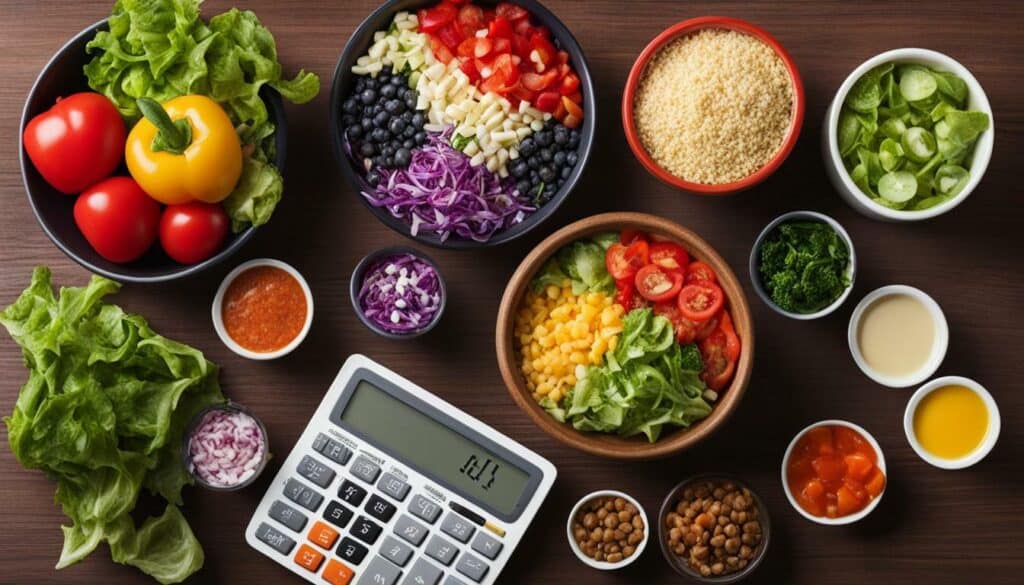
When it comes to salad calories, dressings and toppings play a significant role. Creamy dressings and calorie-dense toppings can quickly add extra calories and fat to your healthy salad. Opting for lighter dressings, like vinaigrettes, and using healthier toppings, such as fresh fruits and vegetables, can help you keep your salad low in calories while still enjoying delicious flavors. To stay on track, utilize a salad calorie calculator to make informed decisions about your meal. With these tips, you can create a nutritious and satisfying salad that fits your dietary goals.
Best Low-Calorie Salad Options
If you’re looking for low-calorie salad options at Salad and Go, we’ve got you covered! Salads can be a delicious and nutritious choice, providing a variety of flavors and textures to keep your taste buds satisfied. Whether you’re looking for a light lunch or a refreshing side dish, Salad and Go offers an array of options that won’t compromise your calorie intake. Let’s take a closer look at some of the best low-calorie salads they have to offer.
1. Garden Greens Salad: This refreshing salad is packed with fresh greens like lettuce, spinach, and kale, along with a medley of colorful vegetables. With just under 100 calories per serving, it’s a great choice for those watching their calorie intake while still enjoying a nutrient-rich meal.
2. Grilled Chicken Salad: For a protein-packed option, the Grilled Chicken Salad is a great choice. It features tender grilled chicken breast on a bed of mixed greens, topped with cherry tomatoes, cucumbers, and a light dressing. With around 200 calories per serving, it’s a satisfying and low-calorie option.
| Salad | Calories |
|---|---|
| Garden Greens Salad | 90 |
| Grilled Chicken Salad | 200 |
| Fruit and Nut Salad | 250 |
| Shrimp Caesar Salad | 300 |
3. Fruit and Nut Salad: If you’re looking for a sweet and savory combination, the Fruit and Nut Salad is a great option. It features a mix of fresh fruits, such as strawberries and blueberries, combined with crunchy nuts and a light vinaigrette. With around 250 calories per serving, it’s a satisfying choice for those looking for a light and refreshing salad.
4. Shrimp Caesar Salad: For seafood lovers, the Shrimp Caesar Salad is a flavorful choice. It combines crisp romaine lettuce, grilled shrimp, Parmesan cheese, and a tangy Caesar dressing. With approximately 300 calories per serving, it’s a filling and delicious option that won’t derail your healthy eating goals.
When choosing a low-calorie salad, it’s important to consider the dressing as well. Opt for lighter options such as balsamic vinaigrette or a squeeze of fresh lemon juice to keep the calorie count in check. So the next time you visit Salad and Go, try one of these best low-calorie salad options for a satisfying and guilt-free meal!
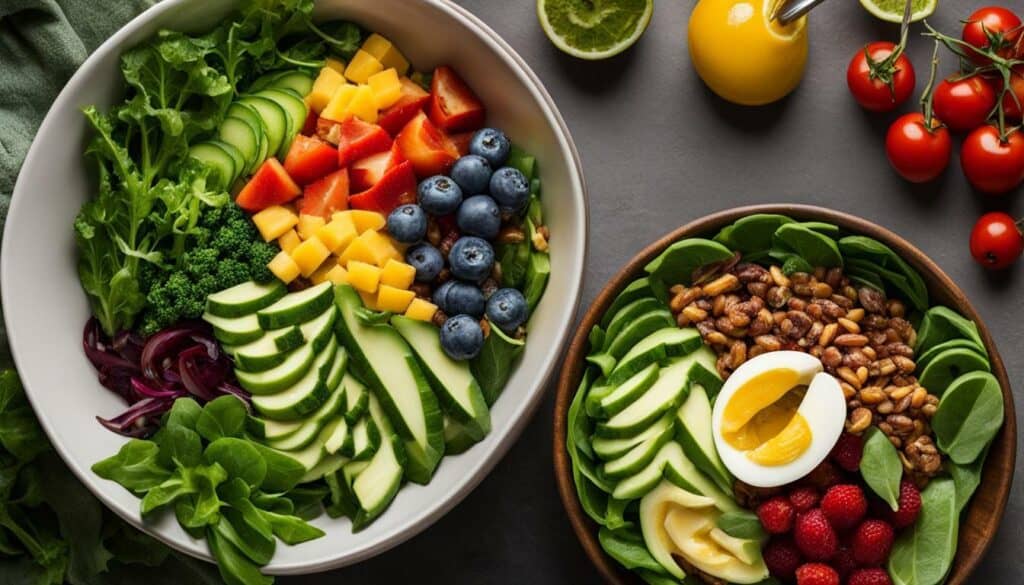
Choosing a healthy salad option is more than just counting calories; it’s about making informed choices that nourish your body. At Salad and Go, they offer a variety of delicious and nutritious salads that can help you achieve your health goals. By considering the salad and go calorie count and selecting the right ingredients, you can create a well-balanced meal that satisfies both your taste buds and your nutritional needs.
When building your salad, start with a base of leafy greens like spinach or mixed greens. These greens are low in calories and packed with essential vitamins and minerals. Next, add a variety of colorful vegetables such as cherry tomatoes, cucumber slices, and bell peppers. These vegetables not only make your salad visually appealing but also provide important nutrients like fiber and antioxidants.
To add some protein to your salad, consider incorporating grilled chicken, shrimp, or tofu. These lean protein sources will help keep you feeling full and satisfied. If you prefer a vegetarian option, you can opt for beans or lentils as a source of plant-based protein. And don’t forget about healthy fats! Add a sprinkle of nuts or seeds like almonds or sunflower seeds to give your salad a delicious crunch and provide essential fatty acids.
| Build a Healthy Salad Checklist: |
|---|
| Leafy Greens |
| Colorful Vegetables |
| Lean Protein |
| Healthy Fats |
When it comes to dressings, opt for lighter options like balsamic vinaigrette or a squeeze of fresh lemon juice. These dressings add flavor without adding excessive calories. You can also create your own dressing by combining olive oil, vinegar, and herbs for a healthier alternative. Remember, a little goes a long way, so drizzle your dressing lightly rather than drenching your salad in it.
By following these tips and being mindful of the salad and go calorie count, you can enjoy a delicious and nutritious meal that supports your overall health and wellness. Remember, making informed choices when it comes to your salads is a step towards a healthier lifestyle.

By exploring Salad and Go calories, we have gained valuable insights into making healthier choices for our meals. With a wide variety of salad options available, it’s important to be mindful of the calorie content and nutritional information provided.
Popular salad choices like Caesar salad, pasta salad, chef salad, Greek salad, and Cobb salad offer different calorie contents depending on the ingredients used. Mayo-based salads such as tuna salad, egg salad, chicken salad, macaroni salad, and potato salad tend to be higher in calories and fat due to the presence of mayonnaise.
It’s also worth considering the calorie variations in commercially available salads from popular chains like Wendy’s, Olive Garden, Subway, and Panera Bread. The dressings and toppings we choose can significantly impact the overall calorie content of our salads, so it’s essential to opt for low-calorie options.
To make informed and healthy choices, be sure to consult Salad and Go’s menu and nutritional information. By taking into account the calorie count and making conscious decisions about the ingredients, dressings, and toppings we choose, we can enjoy delicious and nutritious salads that contribute to a balanced diet.
FAQ
Q: What types of salads does Salad and Go offer?
A: Salad and Go offers a variety of salads, including Caesar salad, pasta salad, chef salad, Greek salad, and Cobb salad.
Q: Do the calorie contents of the salads vary?
A: Yes, the calorie content of the salads at Salad and Go can vary depending on the ingredients used.
Q: Are mayo-based salads higher in calories and fat?
A: Yes, mayo-based salads like tuna salad, egg salad, chicken salad, macaroni salad, and potato salad tend to be higher in calories and fat due to the mayonnaise used.
Q: Do commercially available salads have varying calorie contents?
A: Yes, commercially available salads from Wendy’s, Olive Garden, Subway, and Panera Bread can have varying calorie contents.
Q: How do dressings and toppings impact the calorie content of salads?
A: Dressings and toppings can significantly increase the calorie content of salads, so it’s important to choose low-calorie options.
Q: What are some of the best low-calorie salad options at Salad and Go?
A: Some of the best low-calorie salad options at Salad and Go are available, including salads that are both delicious and nutritious.
Q: How can I make informed and healthy choices when it comes to salads?
A: To make informed and healthy choices, consider the calorie count and nutritional information provided by Salad and Go to create a well-balanced meal.
What Are the Carbs Content in Salsa and How Does It Fit into a Healthy Eating Plan?
When it comes to exploring salsa carbs, it’s essential to consider your healthy eating plan. Salsa is generally low in carbs, with around 4 grams per serving, making it a great option for those watching their carb intake. Incorporating salsa into your meals can add flavor and nutrients without derailing your healthy eating goals.

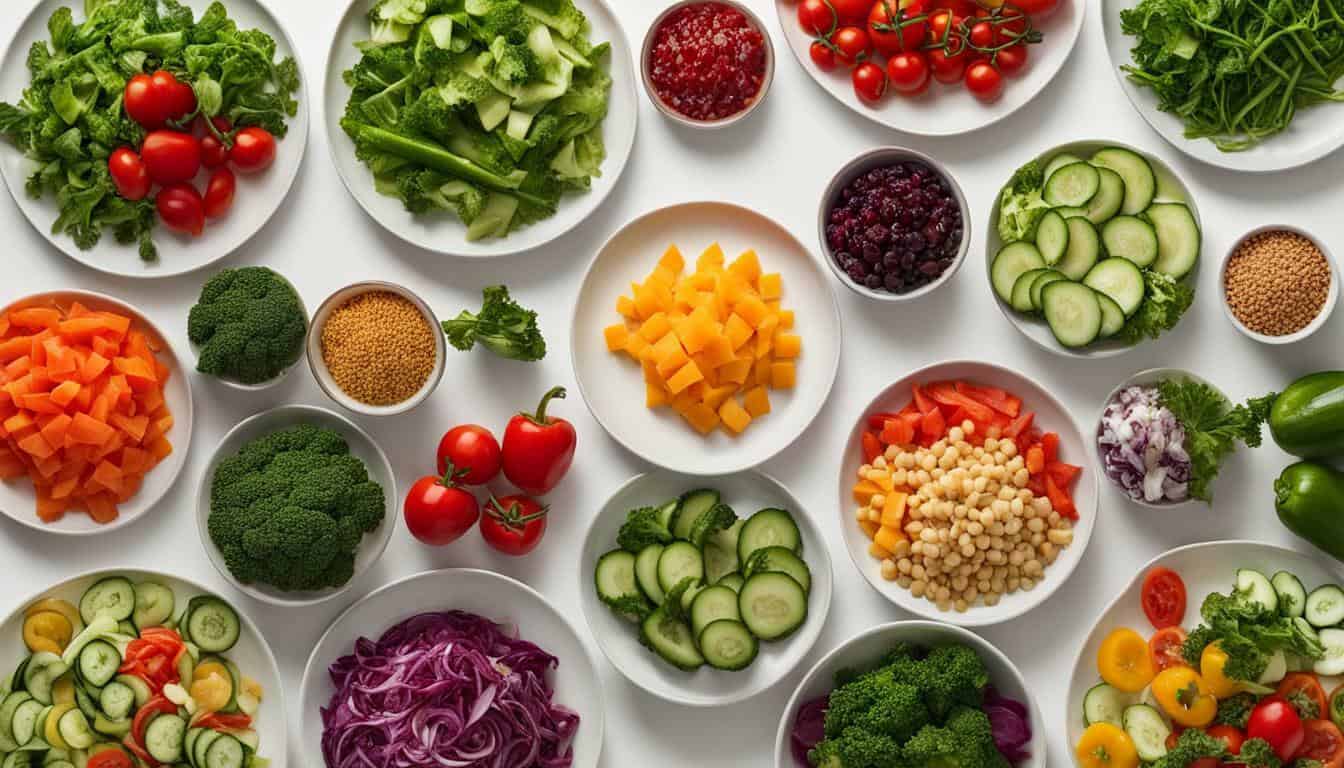
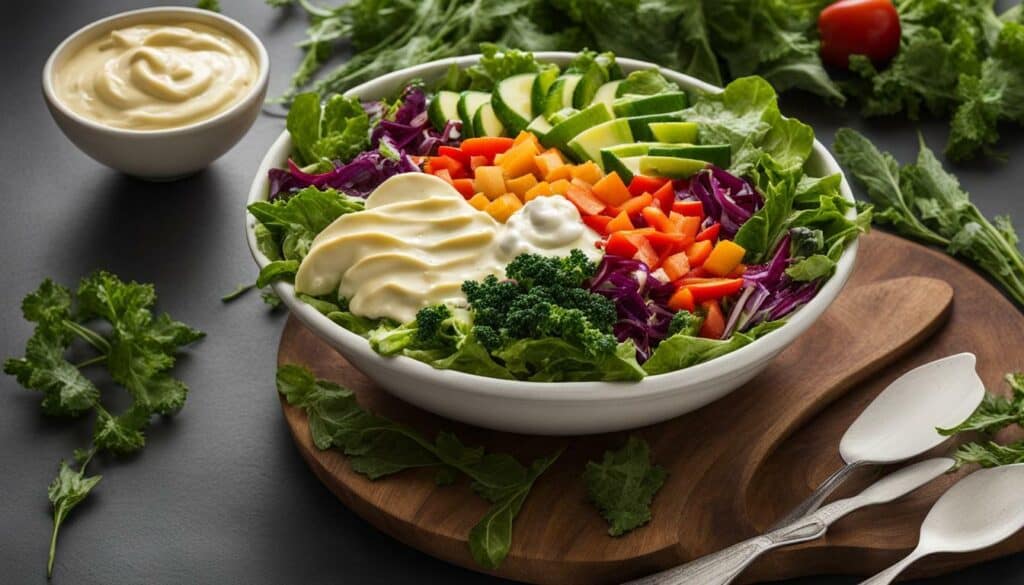



Leave a Reply